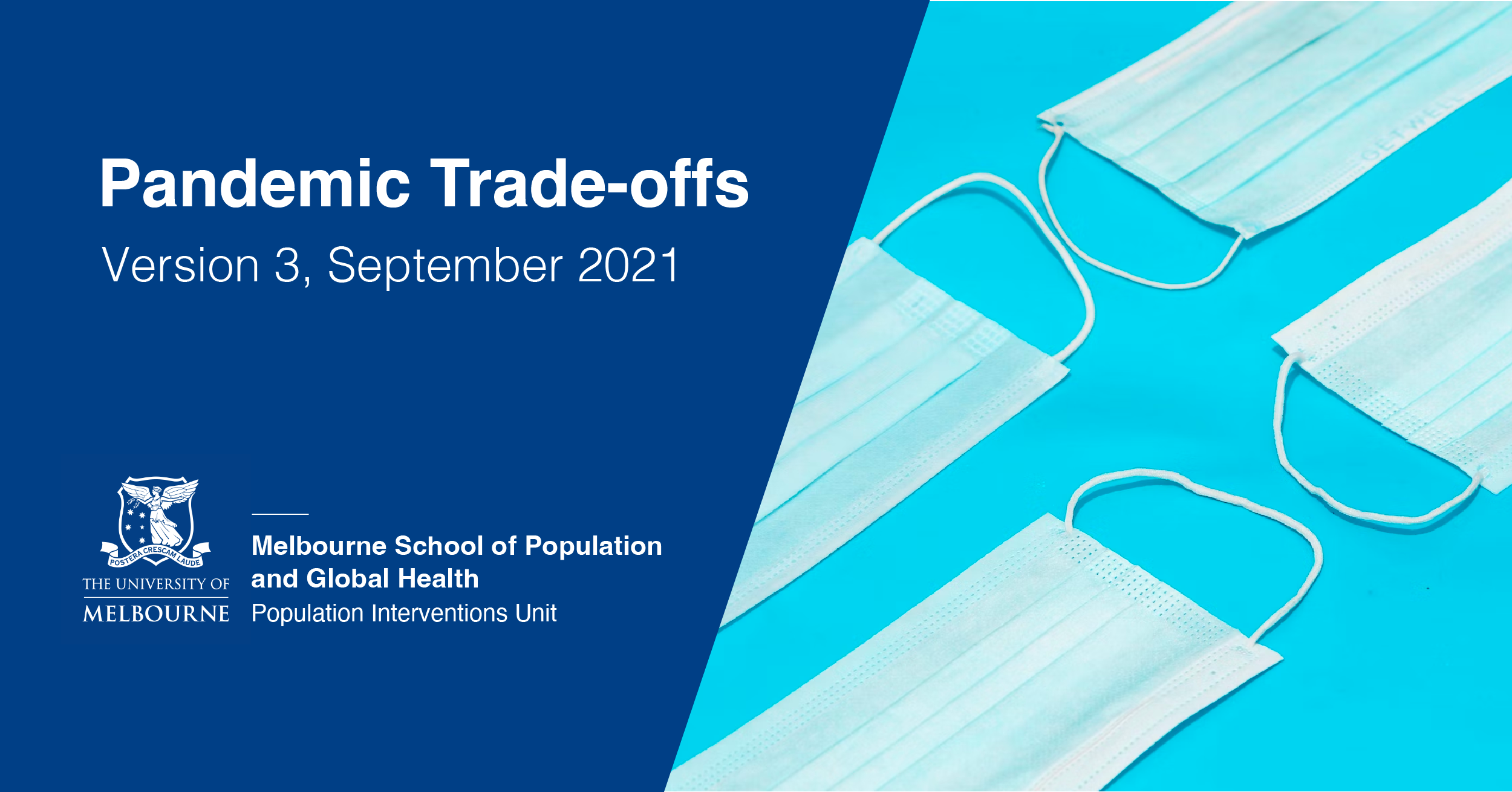Pandemic Tradeoffs: Version 3, September 2021
2022 will be better than 2021. For us to ‘live with the virus’ will take more effort that what many of us assume, but by effectively using the tools we have now and innovating, we can achieve a well-functioning society in 2022.

Our latest COVID-19 Pandemic Tradeoffs modelling shows that in 2022, once borders are open and public health and social measures (PHSMs) are in place as they currently are, the higher the vaccine coverage, the less time we will spend in lockdown. The reason we will still need PHSMs, including lockdowns, is that in the absence of further innovations (e.g. new vaccines, better ventilation and air filtration in buildings, mass testing), vaccine coverage alone will be insufficient to keep ‘a lid on’ transmission surges. We need both PHSMs and high vaccination coverage, and we also need innovations to reduce our reliance on lockdowns. With more tools in our toolkit, we will then also have choices about the mixes of measures we can use to achieve the same result.
In the future we expect immunity from natural infection to top-up vaccine-induced immunity, new variants aside and assuming no serious waning of immunity from natural infection over time. However, in our modelling we found no evidence of emerging herd immunity due to natural infection within the first year of opening up. Even under our ‘barely suppression’ strategy with children vaccinated and about 500 to 2000 infections a day (or 3% to 11% of the Victorian population naturally infected), we do not see evidence of reducing time in lockdown that would occur if natural infection was tipping the balance towards herd immunity. To achieve herd immunity within a year after ‘opening up’ would require very high vaccine coverage (including boosters) and intolerably high infection rates. Accepting that herd immunity in the first year after opening-up is unlikely to be achieved, what measures can we then employ to ‘make life better’?